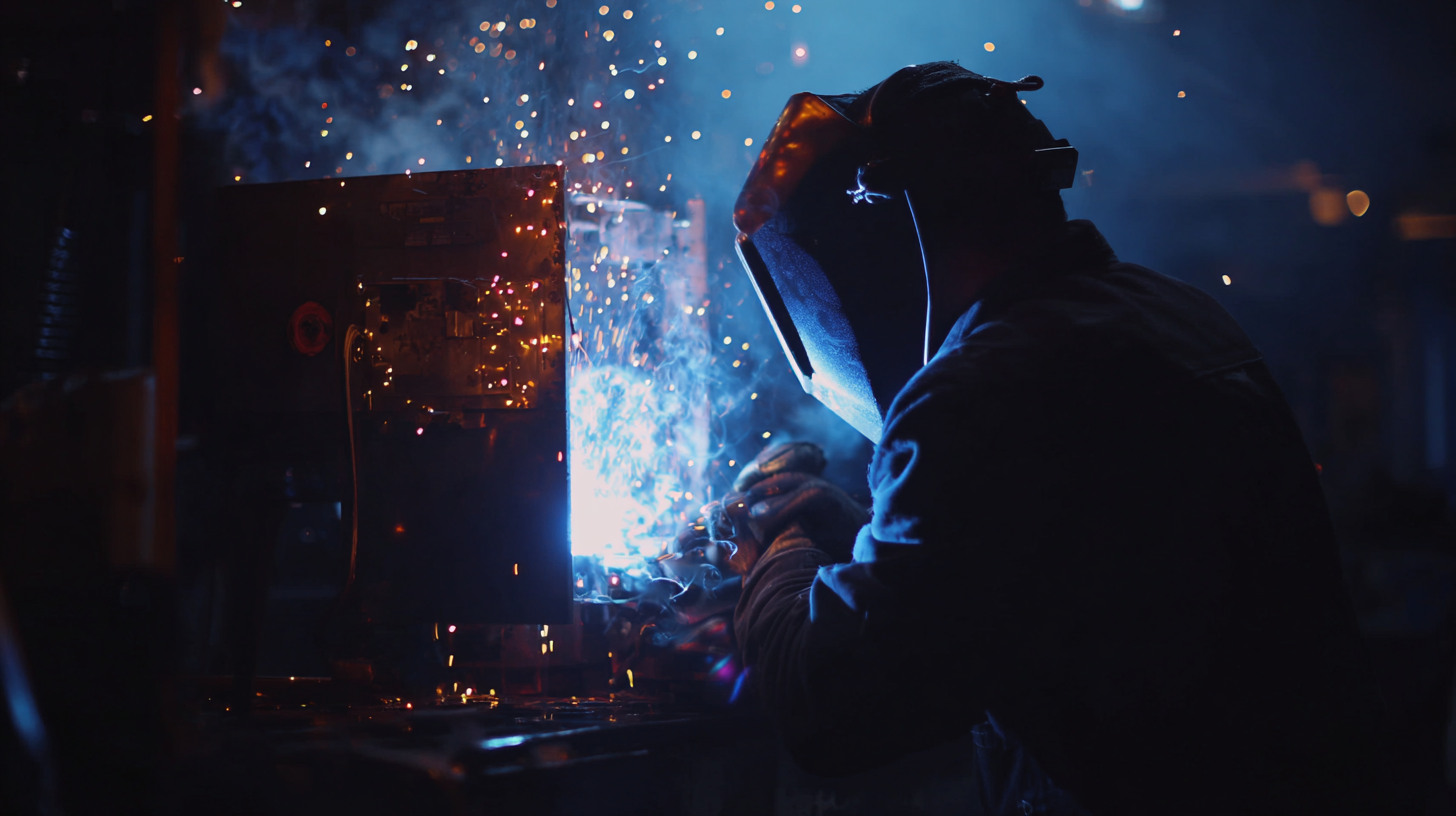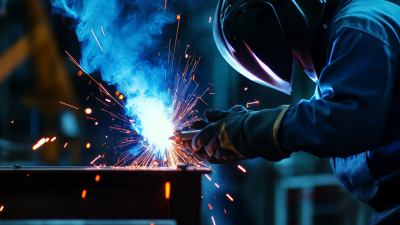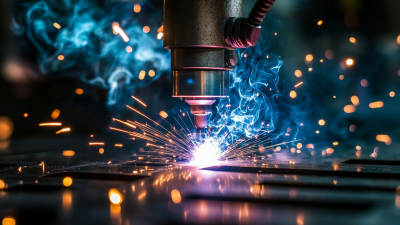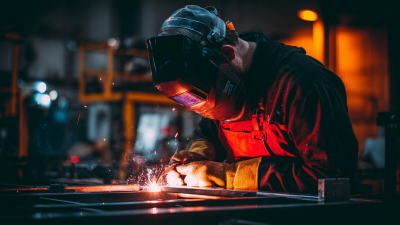The welding machine industry has undergone significant transformations over the past few decades, driven by advancements in technology and the growing demand for more efficient and precise fabrication processes. According to a market research report by Allied Market Research, the global welding equipment market is projected to reach approximately $25 billion by 2027, expanding at a compound annual growth rate (CAGR) of over 5% from 2020 to 2027. This growth can be attributed to the increasing applications of welding machines across various sectors, including automotive, construction, and aerospace. Innovations such as automated welding systems, laser welding technology, and the integration of Industry 4.0 principles into welding processes are reshaping the landscape of the welding machine market. Understanding the evolution and future trends of welding machine technology is essential for industry stakeholders to remain competitive and to leverage these advancements effectively in their operations.

The current state of welding machine technology is defined by rapid advancements and a growing array of applications across various industries. Laser technology has emerged as a pivotal element within this evolution, categorized primarily into laser marking, welding, and cutting machines. Each type serves specialized functions, with laser welding gaining popularity due to its precision and efficiency in creating strong joints in materials. As manufacturing processes demand higher accuracy, the reliance on advanced welding technologies has increased significantly.
Tips: When selecting a welding machine, consider factors such as the material types, thickness, and the required welding speed to ensure optimal performance. Regular training and upskilling for operators can enhance productivity and control over advanced machinery.
The welding equipment industry in recent years has shown steady growth due to fluctuations in demand, tied closely to the broader economic environment and manufacturing sector. Notably, inverter welding products have become mainstream, reflecting a shift towards more energy-efficient solutions. This trend signifies a robust future for welding technologies, where innovations are expected to further streamline processes and expand capabilities in industries ranging from construction to automotive manufacturing.
Tips: Explore automation options, such as robotic welding, to improve operational efficiency and reduce labor costs in your manufacturing setup.
 The welding machine technology landscape has witnessed significant innovations in recent years, enhancing both design and functionality. One key advancement is the integration of smart technologies, enabling machines to collect and analyze data in real-time. This not only boosts efficiency but also enhances precision, making it easier for operators to achieve consistent weld quality. Features such as automated arc detection and adaptive welding parameters have revolutionized the way welders approach various materials, significantly reducing error rates.
The welding machine technology landscape has witnessed significant innovations in recent years, enhancing both design and functionality. One key advancement is the integration of smart technologies, enabling machines to collect and analyze data in real-time. This not only boosts efficiency but also enhances precision, making it easier for operators to achieve consistent weld quality. Features such as automated arc detection and adaptive welding parameters have revolutionized the way welders approach various materials, significantly reducing error rates.
Another notable innovation in welding machine design is the development of portable and lightweight units that do not compromise on power. With the rise of mobile construction sites and remote repairs, manufacturers have focused on creating machines that are easy to transport without sacrificing performance. Furthermore, advancements in inverter technology have led to the creation of more energy-efficient models, resulting in lower operational costs and less environmental impact. As these trends continue to evolve, the future of welding machine technology promises further enhancements, catering to the demands of modern industry.
The welding equipment landscape is rapidly transforming, driven by emerging technologies that promise greater efficiency and precision. According to a report by MarketsandMarkets, the global welding equipment market is projected to reach $27 billion by 2026, growing at a CAGR of 4.7%. Key advancements include automation, artificial intelligence (AI), and the Internet of Things (IoT), all of which are redefining traditional welding processes. For instance, AI-powered systems can now analyze welding parameters in real-time, allowing for adaptive control that minimizes defects and improves overall weld quality.
Moreover, the introduction of advanced materials and techniques, such as laser welding and robotic automation, is reshaping how industries approach fabrication. The American Welding Society notes that laser welding can increase productivity by up to 25% compared to conventional methods, emphasizing its growing significance in high-precision applications. As industries embrace these innovations, the integration of IoT in welding machines allows for smarter operations, enabling predictive maintenance and real-time monitoring. This technological synergy is not only enhancing productivity but also ensuring that welding processes are more sustainable and cost-effective, signaling a bright future for welding equipment technology.
The integration of artificial intelligence (AI) and automation is transforming the landscape of welding machine technology. In recent years, companies have begun leveraging AI to develop data-driven models that significantly enhance the precision and efficiency of robotic welding processes in manufacturing. By implementing physics-informed frameworks, manufacturers can optimize welding operations, leading to improved product quality and reduced operational downtime. This sophisticated approach not only streamlines the manufacturing workflow but also empowers operators with predictive insights, enabling proactive maintenance strategies.
Moreover, the advent of smart welding machines illustrates how AI-driven automation is reshaping not just production efficiency but also the entire digital shipyard and automotive industries. AI facilitates real-time data analysis and decision-making, significantly reducing costs associated with design, simulation, and maintenance. As industries evolve, the demand for reliable and intelligent welding solutions continues to rise, paving the way for innovations that blend human expertise with cutting-edge technology, thereby driving the overall advancement of industrial fabrication.
The welding machine industry is witnessing a significant shift towards sustainability, driven by an increasing awareness of environmental impacts and regulatory pressures. Modern manufacturers are focusing on the reduction of energy consumption during the production and operation of welding machines. This includes the development of machines that utilize advanced inverter technology, optimized for better energy efficiency. Innovations such as these not only reduce operational costs but also align with global initiatives aimed at minimizing carbon footprints.
Moreover, the use of eco-friendly materials in the manufacturing process is gaining traction. Companies are exploring alternatives to traditional components, opting for recyclable and sustainably sourced materials. Additionally, there is a trend towards the incorporation of renewable energy sources in welding operations, enabling facilities to run on solar, wind, or hydroelectric power. As the demand for sustainable practices grows, the welding machine industry is evolving to embrace new technologies and methodologies that support both efficiency and environmental stewardship. This shift not only benefits the planet but also appeals to a market increasingly concerned with sustainability.







